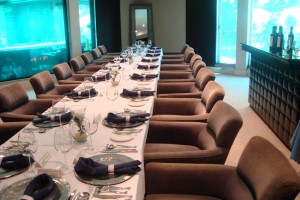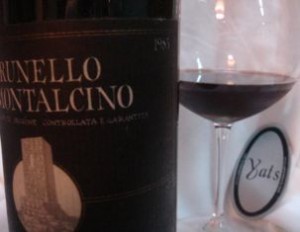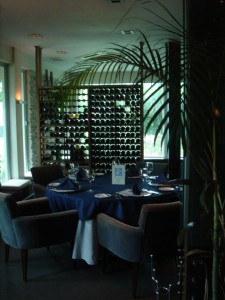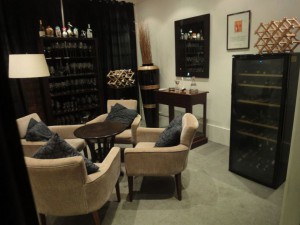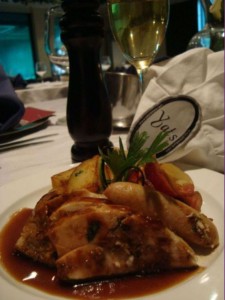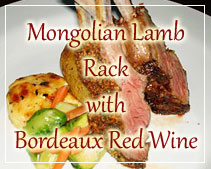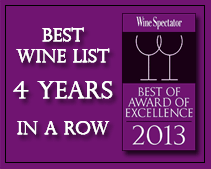Facts: Meat Science Aging of Beef
June 8, 2011
Introduction
Postmortem aging, sometimes called “conditioning” or “ripening,” is a natural process which improves the palatability attributes of meat, especially cuts from the rib and loin. Commercially, postmortem aging is accomplished by subjecting carcasses, primal or subprimal cuts to controlled, refrigerated (above freezing) storage conditions. Of the palatability attributes of beef steaks, tenderness is the attribute most demanded by consumers, and the improvement in tenderness is the primary reason for postmortem aging. Postmortem aging, however, also improves the palatability attribute of favor.
Primal or subprimal beef cuts from the loin and rib (middle meats) are specifically aged post-mortem, since these serve as the source desirable steaks (rib, T-bone, Porterhouse, top loin, sirloin and filet mignon steaks).
(While carcasses or cuts from any species could be aged, postmortem aging is generally limited to beef, due to the relative youth of pork, lamb and veal. Consequently, this discussion concentrates on the postmortem aging of beef.)
Postmortem Aging?
Postmortem aging is a process that occurs naturally in all muscle tissues, whether vacuum packaged or in the form of carcasses or wholesale cuts. In the conversion of muscle to meat, natural enzymes (proteases) found in muscles, breaks down specific proteins in muscle fibers (a process called proteolysis). This breaking (or fragmentation) of these protein strands, called myofibrils, by natural enzymes results in improved tenderness of the rib Tenderization occurs o1 a relatively rapid rate until 3 to 7 days postmortem, and then the rate of increased tenderness diminishes with time. Practically speaking, the increase in tenderness of rib and loin muscles during postmortem aging. Tenderization occurs at a relatively rapid rate until 3 to 7 days postmortem, and then the rate of increased tenderness diminishes with time. Practically speaking, the increase in tenderness of rib and loin cuts after 7 to 10 days is relatively small, compared with the increase during the first 7 to 10 days postmortem.
Types of Aging
Two types of postmortem aging processes are practiced commercially: “dry” and ‘wet’ aging.*
Dry aging is the traditional process of placing an entire carcass or wholesale cut (without covering or packaging) in a refrigerated room for 21 to 28 days at 32-34 degrees F. and 100-85% relative humidity, with an air velocity of 0.5 to 2.5 m/sec. All three conditions, although varying widely in commercial practice, are extremely important in the proper postmortem aging of carcasses, as well as beef ribs and loins.
A third method, accelerated aging uses a higher holding temperature with ultraviolet light used to retard microbial grown which would normally occur at higher temperatures. This method, however, has not been used commercially to a significant degree in recent years, due to the extent that vacuum packaged products are subjected to wet aging.
Too much humidity will allow excessive microbial growth, whereas too little will cause excessive shrinkage. Eighty-five percent relative humidity is a happy medium in slowing microbial growth and moisture loss.
Tenderness development can be accelerated by aging at a higher temperature; however, increased microbial growth becomes a serious problem at higher temperatures.
Air velocity is essential because it acts as a medium for moisture removal from the refrigerated area. Insufficient air velocity will allow excessive moisture to condense on the product, and as a result, off-flavors and aromas, as well as spoilage, will occur. Too high an air velocity, on the other hand, will result in excessive surface drying, with resulting weight and trim losses. The main disadvantage of dry aging is the cost associated with these weight and trim losses.
Wet aging is the aging of meat in vacuum bags (usually the middle meats) under refrigerated conditions of 32-34° F. Obviously, humidity and air velocity are not necessary requirements for proper wet aging. Because most beef is vacuum packaged at the site of carcass fabrication (cutting), wet aging is the predominant method of postmortem aging today.
The aging process continues when a primal or subprimal cut has been placed in a vacuum package. By the We the cut reaches the retail store, at least 7-10 days have normally elapsed the following slaughter, due to holding at packing plant for carcass chilling and fabrication, inventory storage, shipping to the retail warehouse, and subsequent shipping to the retail store level. Therefore, the time associated with the rapid tenderization (7-10 days) and that associated with product movement to the retail store are similar. However, additional aging time is generally beneficial.
Dry and wet aging both result in a similar degree of palatability of rib and loin steaks; however, there can be distinct flavor differences. meat from vacuum-aged cuts has a more bloody/serumy and metallic flavor, whereas, meat from dry-aging has a more brown-roasted beefy flavor What Factors Affect Aging?
Aging rate and time are postmortem variables affecting tenderness. Different rates of aging means some carcasses and/or cuts tenderize very early, while others tenderize gradually. In fact, some beef does not tenderize appreciably, regardless of the aging time. Muscles that are moderately high to high in connective tissue (e.g., muscles located in the round) generally are not very tender after adequate aging because the connective tissue is not fragmented sufficiently during aging.
Widely differing amounts of time for post-mortem aging occur in commercial practice, due primarily to the time that vacuum packaged cuts are held in inventory prior to being processed into retail cuts for sale. The National Beef Tenderness Survey, conducted in 1991, indicated that beef was held (and, in effect, aged) from 3 to 90 days (with an average of 17 days) before retail sale. Aging beyond 28 days results in little benefit to enhanced palatability, and may even be detrimental in terms of increased and unwanted microbial growth and flavor changes.
Fortunately, most beef reaches some level of acceptable tenderness during postmortem aging; even so, the National Beef Tenderness Survey indicated that 15-20% of beef was undesirable in tenderness. Postmortem aging optimizes tenderness, but does not insure totally and uniformly tender beef steaks.
Specific muscles and quality grades are also considered important variables in postmortem aging. The tenderloin is the most tender muscle in the beef carcass, and interestingly requires little postmortem aging. The loin muscle, a relatively tender muscle, because of high fragmentation and small quantities of connective tissue (Collagen), has a similar pattern of postmortem aging as the eye of the round, a less tender muscle of low fragmentation and more quantities of connective tissue (collagen). Steaks from different USDA quality grades, although differing in tenderness within and between grades, have a similar pattern of aging. That is, beef cuts from USDA Choice will age very similarly to beef cuts from USDA Select.
While postmortem aging can have a profound effect on improving palatability (especially tenderness), breeding, feeding, processing and preparation all play an important role in final consumer satisfaction. Indeed, cooking (preparation) often can be the most profound factor in determining beef steak tenderness. For example, beef loin steaks broiled to a rare degree of doneness will be more tender than steaks cooked medium or well done.
Summary
Postmortem aging of beef carcasses and cuts is a natural process that usually improves tenderness under refrigerated conditions. Natural enzymes act to break specific muscle protein strands into smaller pieces to result in improved beef steak tenderness of rib and loin cuts. Most tenderization Occurs early in the postmortem aging process, and by 10 days postmortem, most tenderization has occurred in rib and loin cuts.
Although postmortem aging has a profound optimizing effect on tenderness, it does not insure total and uniformly tender beef steaks because several other ante- and postmortem factors impact tenderness.
Source: http://www.goodcooking.com/steak/aging/aging.htm
Best place to unwind in Angeles City Pampanga Philippines is to wine and dine at Yats Restaurant
Top Fine dining in Manila Philippines, Wine and Dine at Yats Restaurant & Wine Bar, Wine Spectator Best of Excellence Award for top 600 Best Restaurant Wine List in the World, private rooms, vegetarian menus and healthy cuisine available also
Residents of Manila travel out of town for a short getaway up north visit Angeles city, Clark, Pampanga, Philippines to wine and dine and enjoy a special dinner at the best restaurant in the country. Even people from Subic and Cebu travel to Clark to enjoy a special evening and some great food and rare vintage wine at this fine dining restaurant.
Recent opinion survey of frequent travelers heading north towards Subic and Clark Pampanga revealed that the number one most frequently visited fine dining restaurant in Pampanga is Yats Restaurant & Wine Bar located in Clark Philippines. It is generally regarded as the best restaurant in Clark Pampanga as well as a good night out place near Angeles City.
More and more foodies, critics, connoisseurs, frequent diners and wine lovers from Manila travel out of town north to Clark Pampanga, looking for restaurant that serves the best food in Pampanga, choose to wine and dine in famous fine dining Yats Restaurant & Wine Bar. Most visitors enjoy the fine vintage wines from the cellars of this fine dining restaurant. Some purchase a few to bring back home to Manila.
Many frequent diners from Manila, Angeles City, Subic and other major cities in Asia travel to North Luzon Pampanga Clark Freeport to enjoy good food in a romantic fine dining restaurant. On their list of requirements is a good wine list that not only offers a wide selection of wines from different countries but also older vintages that can be enjoyed now and not ten years later. Classic fine dining is the experience that guests of Clark Philippines’ Yats Restaurant & Wine Bar offers to their guests. Although this is an upscale fine dining establishment, families find the restaurant to be very children friendly.
Private dinners can be accommodated in this famous restaurant located in Mimosa, at the heart of Pampanga Clark Freeport. Private rooms suitable for 4 to 24 can be reserved in advance for company and personal functions and events. This fine dining restaurant is a very popular venue for small wedding receptions, social events, company board meetings and annual parties. Many travel all the way from Manila to hold their group dinners and private parties in this famous restaurant in Clark Pampanga.
Philippines Pampanga Clark Freeport is well known for its safety and security, boasting the lowest crime rates in the country. The absence of traffic and pollution also helps to position Clark Pampanga at the top of tourists’ list of destinations for vacation and get-away from Manila with families and friends.
Wine lover’s choice – Yats Restaurant and Wine Bar – for the most impressive and practical wine list in the Philippines, over 2700 selections, enough to satisfy the most fastidious connoisseurs. Wine lovers and gourmand foodies from Hong Kong, Singapore, Japan, Korea and Malaysia dine at Yats Restaurant & Wine Bar when they visit Philippines and bring home some rare vintage wines too back home from Clark Pampanga.
An excellent wine list is not just about 1st growth and cult Cabernet but a seemingly unending selection of affordable aged vintage wines that are not available anywhere else, not even in the best wine shops around town. Yats Restaurant which is located in Clark Pampanga has just that.
Fine dining Yats Restaurant and Wine Bar is frequently used for private meetings, corporate events and social functions. Located in Mimosa Leisure Estate at the heart of Clark Freeport Zone, this top rated resto bar is a highly recommended meeting destination in Pampanga, Philippines.
For comments, inquiries and reservations click on Click here for inquiry and reservations
Restaurant@Yats-International.com
(045) 599-5600
0922-870-5178
0917-520-4401
Ask for Pedro and Rechel
Getting to this fine dining restaurant of Angeles City Clark Freeport Zone Pampanga Philippines
How to get to this fine-dining restaurant in Clark Pampanga? Once you get to Clark Freeport, go straight until you hit Mimosa. After you enter Mimosa, stay on the left on Mimosa Drive, go past the Holiday Inn and Yats Restaurant (green top, independent 1-storey structure) is on your left. Just past the Yats Restaurant is the London Pub.
Yats Restaurant & Wine Bar
Mimosa Drive past Holiday Inn, Mimosa Leisure Estate,
Clark Freeport Zone, Pampanga, Philippines 2023
Manila Sales Office
3003C East Tower, Phil Stock Exchange Center,
Exchange Rd Ortigas Metro Manila, Philippines 1605
(632) 637-5019 0917-520-4393 Rea or Chay
For any assistance in planning and organizing a wedding ceremony, indoor or outdoor garden reception or to find other wedding service providers, Click here to contact us click here
For assistance in hotel and resort bookings in Clark, Pampanga, Philippines, log on to
http://www.HotelClarkPhilippines.com
To buy wine in Manila, Pampanga, Angeles City, Clark or Subic please log on to http://www. ClarkWineCenter.com
To inquire with the highly recommended beach resort hotel in Clark Pampanga visit http://www.ClearwaterPhililippines.com
For more information about Clark, Pampanga, Philippines log on to
http://www.ClarkPhilippines.com





